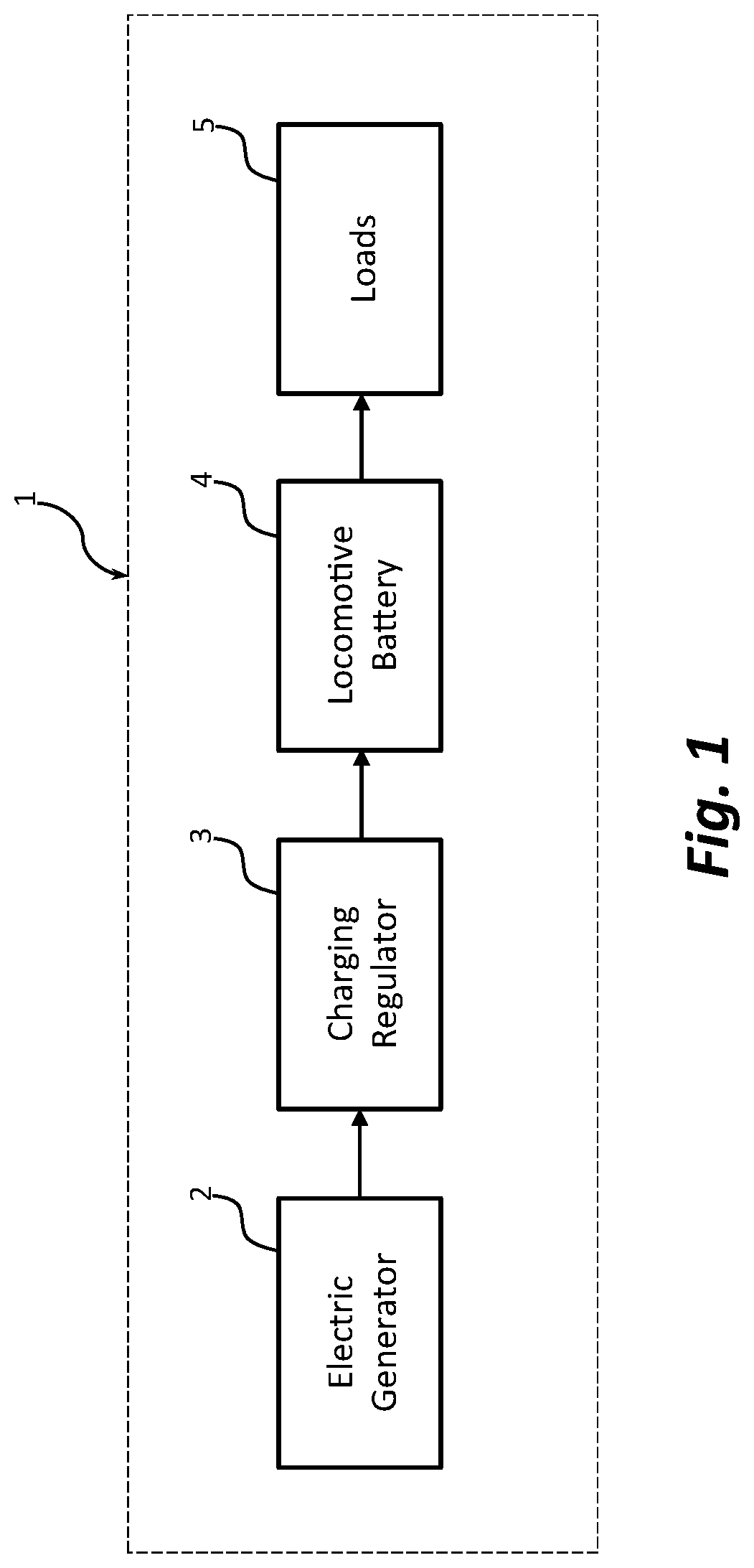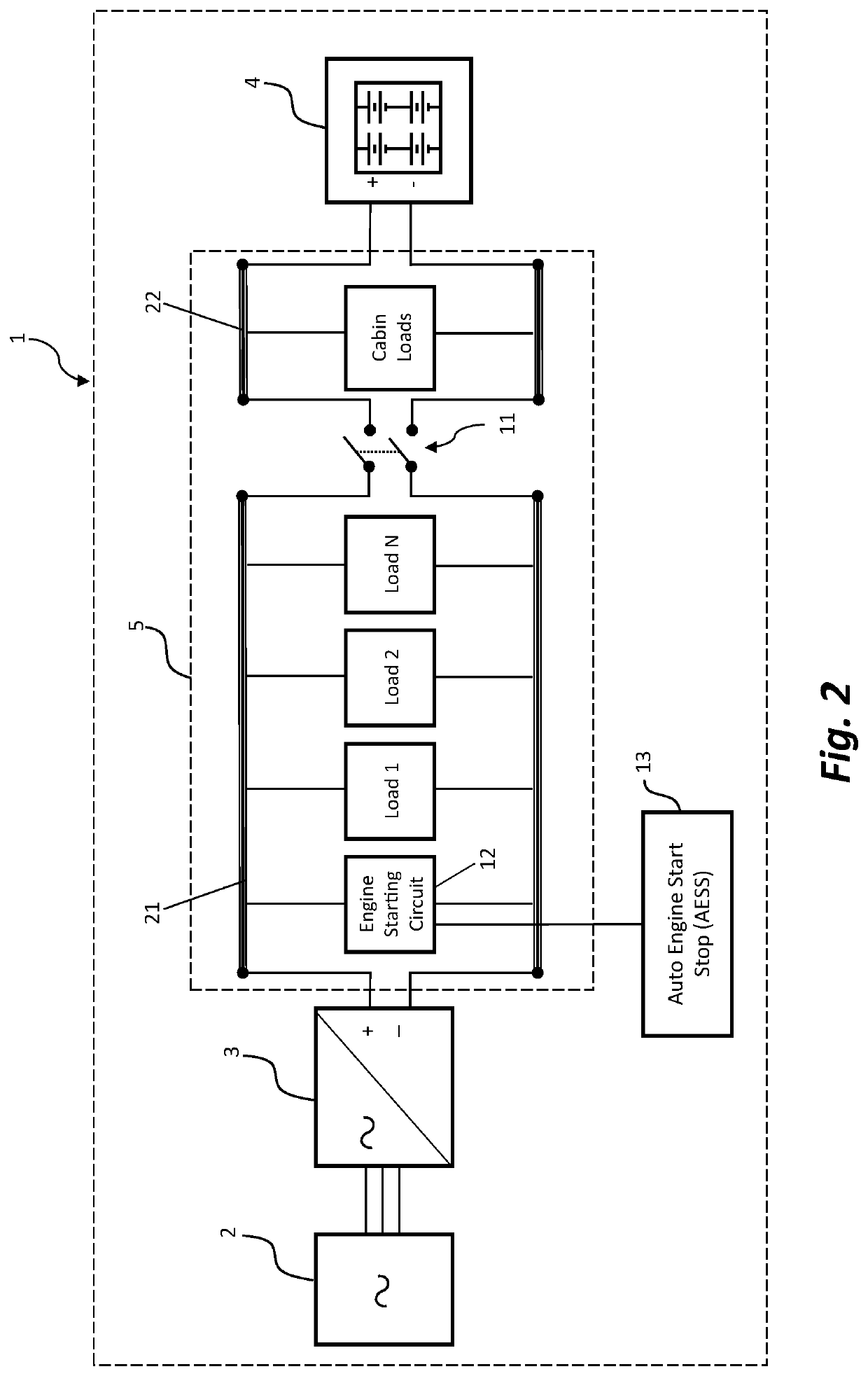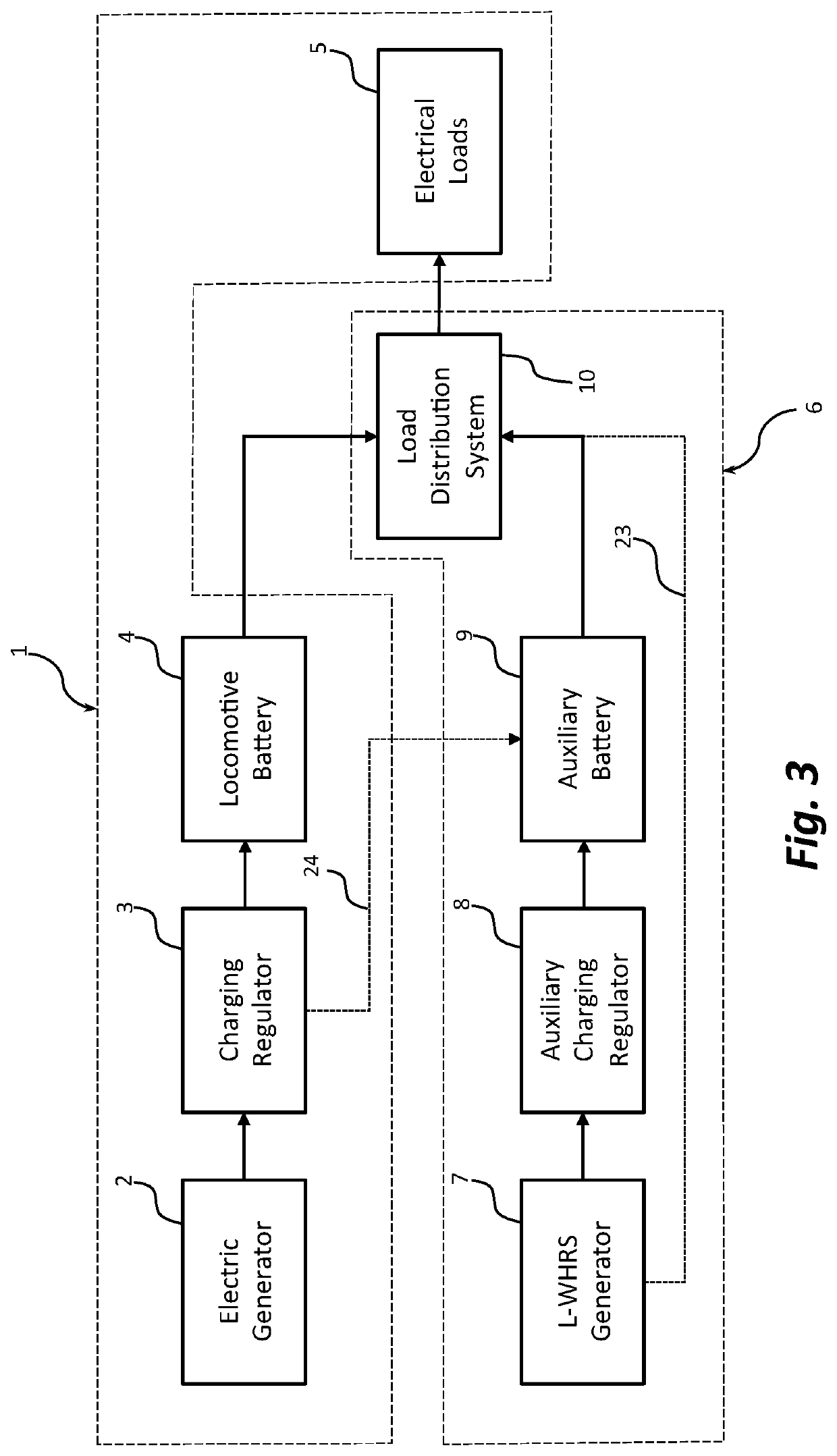Locomotive waste heat recovery system and related methods
a waste heat recovery and locomotive technology, applied in the direction of locomotives, machines/engines, transportation and packaging, etc., can solve the problems of frequent battery replacement, frequent battery replacement, and disruption of operations, and achieve the effect of preventing a substantial drainage of stored power
- Summary
- Abstract
- Description
- Claims
- Application Information
AI Technical Summary
Benefits of technology
Problems solved by technology
Method used
Image
Examples
Embodiment Construction
[0028]Reference will now be made in detail to the exemplary embodiments consistent with the present invention, examples of which are illustrated in the accompanying drawings. Wherever possible, the same reference numbers will be used throughout the drawings to refer to the same or like parts.
[0029]FIG. 1 is a schematic illustration of a locomotive electrical system 1 for supplying power to a locomotive battery 4 and various electrical loads 5, according to an exemplary embodiment of the present disclosure. FIG. 2 is a functional electrical diagram of the locomotive electrical system 1 of FIG. 1 with details of the locomotive power bus for supplying power to certain locomotive electrical loads and the operations of an AESS system 13.
[0030]As shown in FIGS. 1 and 2, locomotive electrical system 1 may include an electric generator 2, a charging regulator 3, locomotive battery 4, and various electrical loads 5. Locomotive electrical system 1 supplies electrical power to various locomoti...
PUM
 Login to View More
Login to View More Abstract
Description
Claims
Application Information
 Login to View More
Login to View More - R&D
- Intellectual Property
- Life Sciences
- Materials
- Tech Scout
- Unparalleled Data Quality
- Higher Quality Content
- 60% Fewer Hallucinations
Browse by: Latest US Patents, China's latest patents, Technical Efficacy Thesaurus, Application Domain, Technology Topic, Popular Technical Reports.
© 2025 PatSnap. All rights reserved.Legal|Privacy policy|Modern Slavery Act Transparency Statement|Sitemap|About US| Contact US: help@patsnap.com



